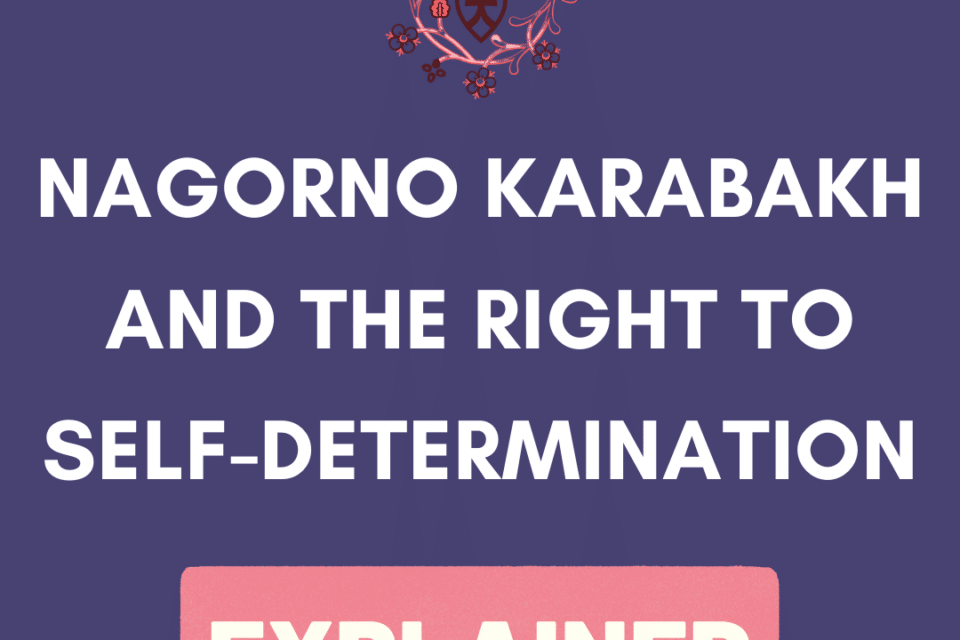Help our local partners realise their vision of hope for their communities

What is Self-Determination?
Self-determination is the process by which a country determines its own statehood and forms its own government.
Who Has the Right to Self-Determination?
According to the Charter of the United Nations, all groups have the right to self-determination, as long as they fit the criteria.
“By virtue of the principle of equal rights and self-determination of peoples enshrined in the Charter of the United Nations, all peoples have the right freely to determine, without external interference, their political status and to pursue their economic, social and cultural development, and every State has the duty to respect this right in accordance with the provisions of the Charter.”
(The United Nation General Assembly Resolution 2625 (XXV): Declaration of Principles of International Law Concerning Friendly Relations and Co-operation Among States in Accordance with the Charter of the United Nations, 24 October 1970).
What are the Criteria for the Right to Self-Determination?
In order to self-determine, a people need to have:
-
Established a sovereign and independent state.
-
Freely associated with another state.
-
Integrated with another state after freely having expressed their will to do so.
The Montevideo Convention states customary international law about the requirements statehood.
To self-determine in accordance with the Montevideo Convention a state needs:
1) A permanent population.
2) A defined territory.
3) A government.
4) The capacity to enter relationships with other states.
Does Nagorno Karabakh (Artsakh) Meet the Criteria?
Yes.
Nagorno Karabakh (Artsakh) is a functioning autonomous democratic state, with its own instruments of state and viable economy.
-
Nagorno Karabakh (Artsakh) has a permanent population of approximately 250,000.
-
The territory of Nagorno Karabakh (Artsakh) is well defined and established, having only changed by 1% since 1994.
-
Nagorno Karabakh (Artsakh) has a democratically elected government. Free, democratic elections have been held in the region since 1995. The most recent general election was held in the Republic of Artsakh on 31st March 2020, with a second round of the presidential election held on 14th Voters elected President Arayik Harutyunyan and 33 members of the National Assembly.
-
Nagorno Karabakh (Artsakh) currently has 8 diplomatic missions in other countries and its government has numerous contracts with other states and state corporations.
Moreover, the people of Nagorno Karabakh (Artsakh) are 94% Armenian and have freely integrated as an autonomous zone looking to Armenia for historical, cultural, and political reasons of their own volition as their natural neighbours.
Nagorno Karabakh’s (Artsakh) population are both geographically and racially distinct from the Muslim Azerbaijan State under which they officially stand according to international law.
Does Nagorno Karabakh (Artsakh) Have Any Other Claims to Self-Determination?
Yes.
Nagorno Karabakh (Artsakh) has a well-established and historic claim to independence and self-determination.
Artsakh is one of the three ancient provinces of Armenia which was established in 189 BC. The historical roots of the region now called Nagorno Karabakh (Artsakh) can be traced as far back as the 5th Century BC.
In 1923, the area now known as Nagorno Karabakh (Artsakh) was annexed by Stalin to the New Soviet Republic of Azerbaijan even though much of the population were ethnic Armenians who voted to reunite with Armenia and took to the streets to protest the annexation to Azerbaijan.
After the fall of the Soviet Union, Nagorno Karabakh’s (Artsakh) population held a referendum and voted to secede from Azerbaijan and become part of Armenia.
But isn’t Nagorno Karabakh Legally Inside Azerbaijan and Doesn’t it Belong to Azerbaijan?
According to legal experts, such as Geoffrey Robertson QC, Azerbaijan’s repeated claims to sovereignty over Nagorno Karabakh (Artsakh) can be refuted.
Nagorno Karabakh (Artsakh) has always been predominantly occupied by ethnic Armenians. When the Soviet Union dissolved in 1988, and despite Azerbaijan encouraging Azeri people to settle in the region, the population was still 75% Armenian.
After the Sumgait massacres of Armenians by Azerbaijanis in Azerbaijan, the people of Nagorno Karabakh voted for unification with Armenia.
However, after the Nagorno Karabakh (Artsakh) army overcame the Azerbaijani invasion, they decided by overwhelming vote in 1992 to become an independent republic.
Conclusion
In conclusion, Nagorno Karabakh (Artsakh) fits the criteria for self-determination as defined by the Charter of the UN, the Declaration of Friendly Relations, and the Montevideo Convention.
Nagorno Karabakh (Artsakh) has a settled population, defined territory, a democratically elected government and diplomatic missions and contracts with other nations.
Moreover, the population of Nagorno Karabakh (Artsakh) are 94% ethnic Armenian and share a history, culture, and politics with Armenia. Additionally, Nagorno Karabakh’s population are geographically, ethnically, historically, and racially distinct from the Muslims Azerbaijan state.
Finally, Nagorno Karabakh (Artsakh) has historic claims to self-determination and has made repeated, substantive, and valid attempts to self-determine. This includes the 1992 vote in which the people of Nagorno Karabakh (Artsakh) voted to become an independent republic.
Click here for an accessible history of Nagorno Karabakh.